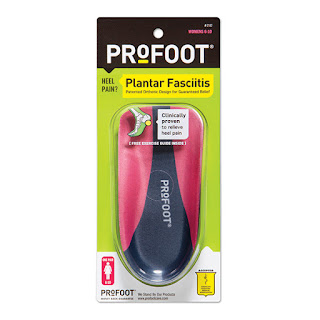Magnesium Oil Helps Relieve Neck Pain
My husband has suffered with neck pain and stiffness for many years. It was so bad it was hard to turn his head while driving. A week ago he asked about using magnesium oil. Fortunately, I had recently ordered some
Asutra magnesium oil for myself and was able to provide it for him immediately.
&
Magnesium Oil is Easy to Apply
Before Hubby went to bed, I got read to apply the magnesium oil. I washed the back of his neck and shoulders with a washcloth to remove any sweat or traces of sunblock, and then dried the area. Then
I sprayed some magnesium oil on his back and neck and rubbed it in. Since I have an arthritic thumb, I did some of the rubbing with that, hoping it might help me, too.
I had used the Asutra behind my knee earlier and had noticed a slight sting.
When you begin to use magnesium oil it can sting or itch for a few minutes. I had forgotten to mention this to my husband. If your cellular magnesium levels are low, your skin sucks up the large molecules quickly, and that's what causes the sting.
As your levels come back up to normal, it doesn't sting like it might at first. It doesn't sting either of us now. Even when there is a sting, it disappears quickly.
The next morning Hubby told me his the treatment had lessened his pain and it was easier to turn his head. We now do this every night to keep his magnesium levels up in those muscles.
He decided to also see a chiropractor at his gym for a massage. That helped, too, and
the chiropractor told him that using the magnesium oil was a good way to retain the results of the massage. My thumb is also doing better than it was.
My husband can now turn his head much farther than he could two weeks ago.
The photo below was taken outside because the light is better. I wanted you to see how easy it is to apply the oil. Aim it where it's needed and spray. You can then rub it in or not. We choose to rub it in for best absorption. I help because he can't reach to rub in the magnesium oil where needed.
 |
| Hubby Demonstrates How to Apply Magnesium Oil, © B. Radisavljevic |
What is Magnesium Oil?
It's not an oil at all. It's really a liquid form of concentrated magnesium chloride. It's made by dissolving magnesium chloride flakes in water. It only seems a bit oily when applied.
Don't I Get Enough Magnesium from My Tablets?
We have both taken magnesium in tablets for at least twenty years. The problem is that most of what we were taking was magnesium oxide, and that is not easily absorbed.
After some research I learned that oral magnesium is most easily absorbed in its malate form.
I recently switched to to a sustained release magnesium malate and niacinamide formula called Arterin. Since I started taking it I am sleeping better and experiencing less knee pain that I was.
Arterin was designed to support normal blood pressure levels and a healthy heart rhythm. Since I started taking it my problems with both of these have not recurred. I was having a real problem with heart palpitations, even though I was supposedly getting lots of magnesium in my supplements and eating lots of almonds and other magnesium food sources.
Although I still take Arterin, I've had to adjust my levels, because I was experiencing the
one side effect of too much oral magnesium -- loose and watery stools. I can now take two instead of four Arterin tablets and substitute the Asutra magnesium oil to get the rest of the magnesium I need. This reduces the inconvenient side affect.
Are You Getting Enough Magnesium?
If you are relying on your diet and supplements in tablet form, you may not be. Many cheap supplements use magnesium oxide. The calcium / magnesium ratio needs to stay at a balanced 2:1. We were taking Kirkland Calcium Citrate (most absorbable calcium form) with Magnesium (oxide) and zinc. Ratio was 500 mg calcium to 80 mg magnesium -- not enough. To make up for it, we were taking another tablet with 400 mg magnesium oxide. We also were eating lots of nuts, seeds, bananas, avocados, and dark chocolate -- all very good food sources. In spite of this, we weren't getting enough magnesium to alleviate the symptoms of lower than optimal magnesium levels.
Men under thirty need 400 milligrams of magnesium a day. Men over thirty need 420 milligrams. Women under thirty need 310 milligram. Those women over thirty need 320. Pregnant women nineteen to thirty need 350 milligrams. Pregnant women over thirty need 360. Pregnant women are advised not to take more than 350 milligrams a day in supplement form.
Since magnesium is stored mostly in your body's bones and organs, very little is in your bloodstream at any given time. That's one reason those batteries of blood tests your doctor orders from time to time don't show if you have enough of this important mineral.
Less than optimal levels levels of magnesium can manifest themselves through insomnia, fatigue, muscle weakness, abnormal heart rhythms, muscle spasms, anxiety and depression, difficulty swallowing, forgetfulness, and poor nail growth. That's because magnesium is essential for over 300 chemical reactions in your body. It affects almost everything. It regulates the body's use of other important minerals and also some vitamins, such as vitamin D.
Optimal levels of magnesium help keep us feeling mentally and physically healthy. They have been shown to improve memory; reduce depression caused by low serotonin levels; reduce stress and anxiety, both of which lower magnesium levels; prevent diabetes because it helps metabolize carbohydrates and glucose; thin the blood, which may reduce chances of heart attacks and strokes; build healthy bones; shorten duration of migraines; relieve some PMS symptoms; and improve flexibility by reducing the build-up of the lactic acid that cause muscle pain and tightness (like that in my husband's neck).
My Recommendations
To insure optimal magnesium levels, include rich sources of magnesium in your diet. I have mentioned some above. Avoid too much calcium in proportion to magnesium.
Don't drink too much coffee soda, or alcohol. Use salt in moderation and avoid hidden salt in processed food.
Use very few refined and processed foods.
Very few people get enough magnesium through diet alone. They can also deplete their supply through heavy menstrual periods, excessive sweating, and stress. Most people will need some form of supplementation for optimal levels. You can supplement with pills, magnesium oil, and
soaking in salts that contain magnesium. Doctors can also give injections. Unless you love soaking in the tub, I recommend the following supplements. When you make your first order of Asutra, it includes a free e-book about the benefits of magnesium and how to get them. It also lists foods rich in magnesium.
&
What the Government Wants You to Know
The symptoms of low magnesium levels I have described may also have other causes. This post is intended for informational purposes only. My statements have not been evaluated by the FDA. My information and the products I have mentioned here are not intended to diagnose, cure, treat, or prevent any disease or illness. Please consult your doctor before changing your diet or using the products I have told you worked for us. Every body is different and can respond differently.
Those who have kidney failure or who are on dialysis should never take magnesium unless under medical supervision.
Any Feedback?
Your comments are welcome below. If you think this might be helpful to someone you know, please share it. The image below was designed for Pinterest.
***
Note: The author may receive a commission from purchases made using links found in this article. “As an Amazon Associate, Ebay (EPN) and/or Esty (Awin) Affiliate, I (we) earn from qualifying purchases.”





















































